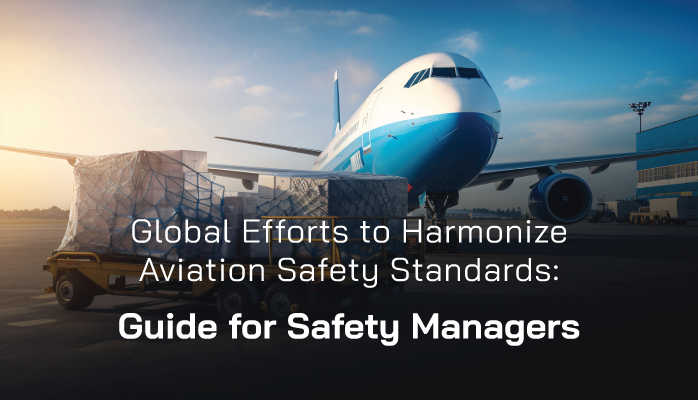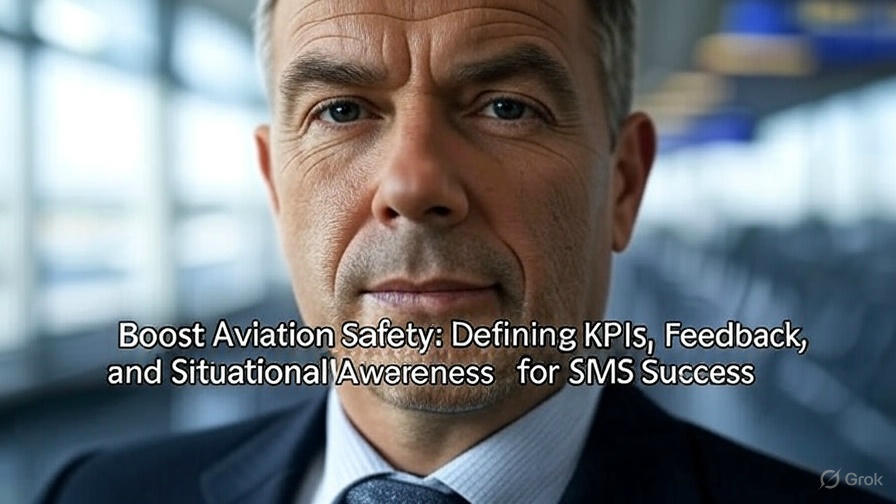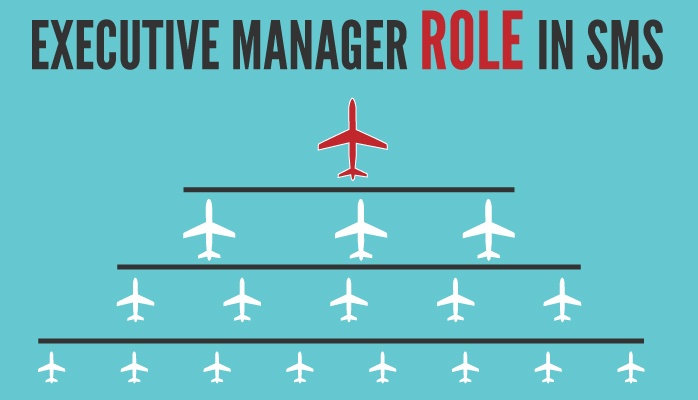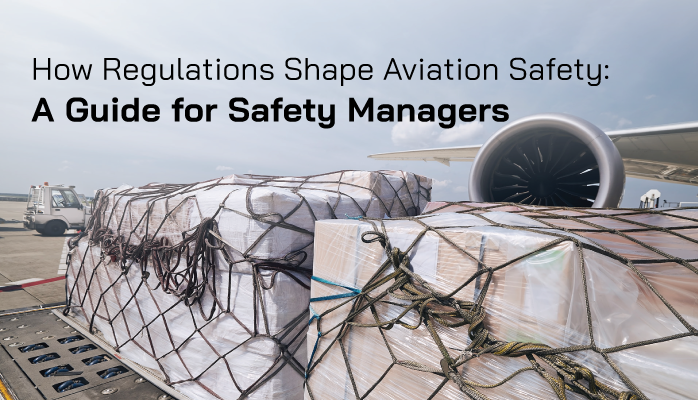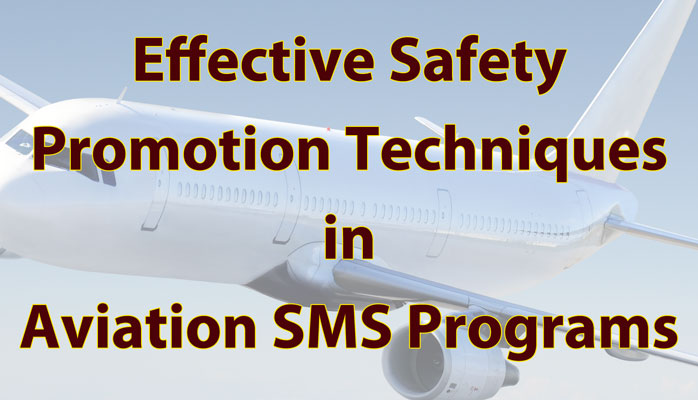In November 2025, NorthWest Data Solutions (NWDS) submitted a financial proposal for SMS Pro, its flagship Safety Management System platform, to a complex Southeast Asian aviation group operating scheduled airline, cargo airline, MRO facilities, a Part 141 flight school, seaplane services, and five airports. The quoted SMS database software cost three to ten times higher than every global competitor in the aviation SMS database space.
2026 Most Expensive Aviation SMS Software May Dominate Market
Global Efforts to Harmonize Aviation Safety Standards: Guide for Safety Managers
Global Efforts to Harmonize Aviation Safety Standards
In the fast-evolving aviation industry, ensuring consistent safety standards across borders is critical. As aviation safety managers, you play a pivotal role in navigating the complexities of global regulations and fostering a culture of safety.
This article explores the ongoing global efforts to harmonize aviation safety standards, their implications, and actionable insights to enhance compliance and safety in your organization. This guide aims to inform and empower you to align with international best practices.
Topics: 1-Safety Policy
Boost Aviation Safety: Defining KPIs, Feedback, and Situational Awareness for SMS Success
Aviation safety managers operate in a high-stakes environment where precision, vigilance, and continuous improvement are non-negotiable. To maintain and enhance safety standards, defining Key Performance Indicators (KPIs), establishing robust feedback mechanisms, and integrating Situational Awareness (SA) into safety management systems are critical.
This comprehensive guide provides actionable steps to achieve these goals, ensuring compliance with regulations, improving operational efficiency, and fostering a culture of safety.
Topics: Key Performance Indicators, 3-Safety Assurance, 2-Safety Risk Management
How to Develop a Safety Analysis Process for Your Aviation SMS Manual
Develop Safety Analysis Process for Aviation SMS Manual
A safety analysis process is a critical component of an aviation Safety Management System (SMS) manual, as outlined in TOC 5.1–5.5. It ensures systematic evaluation of safety data, including hazard reports and incident investigations, to support Management of Change (MOC) and maintain compliance with International Civil Aviation Organization (ICAO), Federal Aviation Administration (FAA), and European Union Aviation Safety Agency (EASA) standards.
Executive Overview of ICAO Annex 19 and Its Global Importance for Aviation Safety
For new aviation safety managers, preparing for Safety Management System (SMS) audits is a formidable challenge, especially when it involves coaching accountable executives and training staff on SMS concepts.
With limited experience, knowing where to start can feel overwhelming. At the heart of effective SMS implementation lies a clear understanding of ICAO Annex 19, the International Civil Aviation Organization’s cornerstone document for safety management. This global standard provides the framework for SMS, guiding organizations worldwide to enhance safety and meet regulatory expectations.
Topics: Aviation SMS Implementation, 4-Safety Promotion, 3-Safety Assurance, 1-Safety Policy, 2-Safety Risk Management, Risk Management Training
How SMS Software Enhances Aviation Emergency Response Planning
SMS Software Enhances Aviation ERPs
A critical component of aviation safety management is aviation emergency response planning, which ensures organizations are prepared to handle crises swiftly and effectively. Safety Management System (SMS) software, such as SMS Pro, plays a pivotal role in streamlining these processes, enhancing compliance with global standards, and improving operational resilience. This article explores how SMS software transforms emergency response planning, with a focus on SMS Pro’s powerful tools for incident management, workflow automation, and regulatory compliance.
Topics: Aviation SMS Database, Risk Management Software, 2-Safety Risk Management
Key Points to Familiarize Executives with ICAO Annex 19, FAA, and EASA SMS Guidelines
For new aviation safety managers, preparing for Safety Management System (SMS) audits can feel overwhelming, especially when it comes to coaching accountable executives. These senior leaders, often focused on operational and financial priorities, may not be familiar with the intricacies of SMS or their critical role in ensuring compliance. Yet, their understanding of regulatory frameworks like ICAO Annex 19, FAA SMS guidelines, and EASA SMS requirements is essential for fostering a robust safety culture and passing audits.
Topics: 4-Safety Promotion, 3-Safety Assurance, 1-Safety Policy, Risk Management Training, FAA Compliance, Safety Culture
Summary of Accountable Executive SMS Responsibilities for Audit Preparation
For new aviation safety managers, preparing for a Safety Management System (SMS) audit can feel like navigating uncharted skies. A critical challenge is ensuring that accountable executives—senior leaders like CEOs, directors, or operations managers—understand and fulfill their SMS responsibilities.
These executives are pivotal in demonstrating compliance to regulators like the FAA, EASA, or ICAO, yet many lack the time or technical background to dive into the aviation SMS details.
Topics: Aviation SMS Implementation, 4-Safety Promotion, 3-Safety Assurance, 1-Safety Policy, 2-Safety Risk Management, FAA Compliance, Safety Culture
How Regulations Shape Aviation Safety: A Guide for Safety Managers
How Regulations Shape Aviation Safety
Aviation safety is a cornerstone of the industry, ensuring millions of passengers and crew members reach their destinations securely each year.
For aviation safety managers, understanding the intricate relationship between regulations and safety outcomes is critical. Regulations set the framework for operational standards, but their impact—both positive and challenging—requires careful navigation to maintain safety while fostering efficiency.
This article explores how regulations influence aviation safety, offering insights for safety managers to optimize compliance and enhance safety protocols.
Topics: 3-Safety Assurance, FAA Compliance
How to Launch a Safety Champion Program to Promote Aviation SMS
In aviation, where safety is paramount, a robust Safety Management System (SMS) is the cornerstone of risk management. For aviation safety managers and accountable executives—senior leaders responsible for SMS oversight—promoting SMS across an organization can be challenging, especially when training staff on complex concepts.
New safety managers often struggle to engage employees and foster a safety-first culture, while executives need practical ways to demonstrate leadership and compliance with standards set by the International Civil Aviation Organization (ICAO) and national authorities like the FAA or EASA.
Topics: 4-Safety Promotion
Site content provided by Northwest Data Solutions is meant for informational purposes only. Opinions presented here are not provided by any civil aviation authority or standards body.

